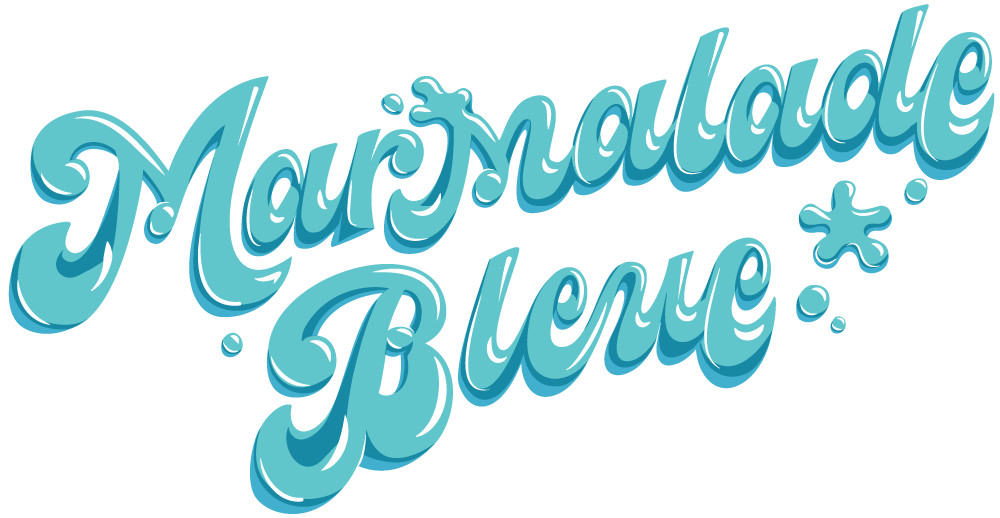Typographers with Dimension: David Rogers & Ellen Schofield
Minnesota collaborators David Rogers and Ellen Schofield caught my eye with their prolific and colorful Paper State Flowers project, marrying cut paper, type, and florals. Part poppy, part tiki aesthetic, these two combine forces beautifully making their collective voice shine.
Name
David Rogers and Ellen Schofield
Website
Background
David: My love of letterforms goes back to my early struggles with learning to read. I have dyslexia and thank goodness I had some awesome adults in my life who worked tirelessly to help me decode how the visual form of language works. From this early emphasis on symbols and their associated sounds, I'm totally obsessed with the way letters and numbers look—both their form and their counter form. Eventually I earned my MFA in design from the University of Iowa and I now teach design at Minnesota State Mankato. Helping fuel others' passion for design is a good gig and it allows for some nice creative flexibility.
Ellen: My interest in dimensional design goes back to my time at The University of Minnesota working on my MFA. At the University of Minnesota, design is housed with the architecture program, so you have access to all of the fun expensive toys that graphic designers don't usually get to play with. I tried out their laser cutters and quickly fell in love. Most people using laser cutters work in CAD but the machines will run with any vector file. I was able to use my years of Illustrator knowledge and produce these fun results immediately. I love being able to take a flat illustrator graphic and cut it so it becomes a real dimensional item that can be bent, twisted, and folded in space. I now teach design at Minnesota State University, Mankato where I get to introduce students to laser cutting technology and be continually inspired by the things they are creating.
Together: Fortunately we teach together at Minnesota State Mankato. After admiring each others work for about a year, we decided to collaborate on a project together—Paper State Flowers (paperstateflowers.com). This year-long project has helped us figure out how we work together and we discovered that we liked it a lot. So with our mutual love of paper-based design and illustration, we've decided to keep on collaborating. We've formed a little partnership to take on both self-initiated work and client work. Again and again, this has proved that collaborating with a friend is ten times more fun then designing alone.
Experience in the Field
Since 2013
Describe your Designated Workspace, if one exists.
We don't have a shared studio, yet! We each have our home studio space where we can meet to figure out ideas. But if we're going to be working with a laser cutter, assembling compositions, and photographing work, then we utilize our department's design studio space. There we have access to great resources and, for better or worse, we work along side our students—they're doing their projects and we're doing ours.
Medium(s) used?
Original/Final Fine Art Pieces, Photography
Preferred materials and why? Does the message dictate the materials, or vice versa?
• paper - Nine times out of ten we're using French Paper, cover weight. We've gravitated towards paper because it is such a versatile material. It can lay flat or be folded like crazy.
• double sided tape - Specifically we use a brand called Sookwang. It is acid free, comes in very thin strips, and is quite strong. For our compositions to hold their form, we're constantly taping the various components together and to each other.
• adhesive spray - When double sided tape isn't the answer, acid-free adhesive spray can do the job.
• foam core - Sometimes to create our multi-layered compositions we use foam core between the layers as a form of support. This is our least favorite material and we're still looking for an alternative.
Do you use special tools to build letterforms? Do these vary and why?
• Adobe CC for software
• laser cutter (Universal Laser System)
• x-acto knifes
• camera and lights
We really are excited about the process of weaving our visual ideas back and forth through digital and physical processes. From a sketch, to screen rendering, to laser cut, to physically assembled, to digitally photographed—this back and forth play between our hands and our screen is always exciting for us.
List 3 adjectives describing your work.
Joyful
Colorful
2.5D
Concept vs. Execution
What challenges do you combat during the ideation/building process? How do you overcome these obstacles?
The first struggle is what to listen to when we're in the studio together.
As collaborators it's always an interesting challenge to sketch as individuals and then figure out how to proceed together with a more refined plan that isn't about forcing each other's ideas to coexist. Instead we talk honestly about what we've both put on the table and then we look for what meaningful connections might exist. From this somewhat messy step we figure out what serves the challenge most effectively.
Solo vs. Social? How do you operate now and do you plan to change direction in the future?
Team. I suppose the workflow is somewhat described in the challenges question above. So far no need to adjust. We could just use a few more hours in the day, probably like everyone could.







